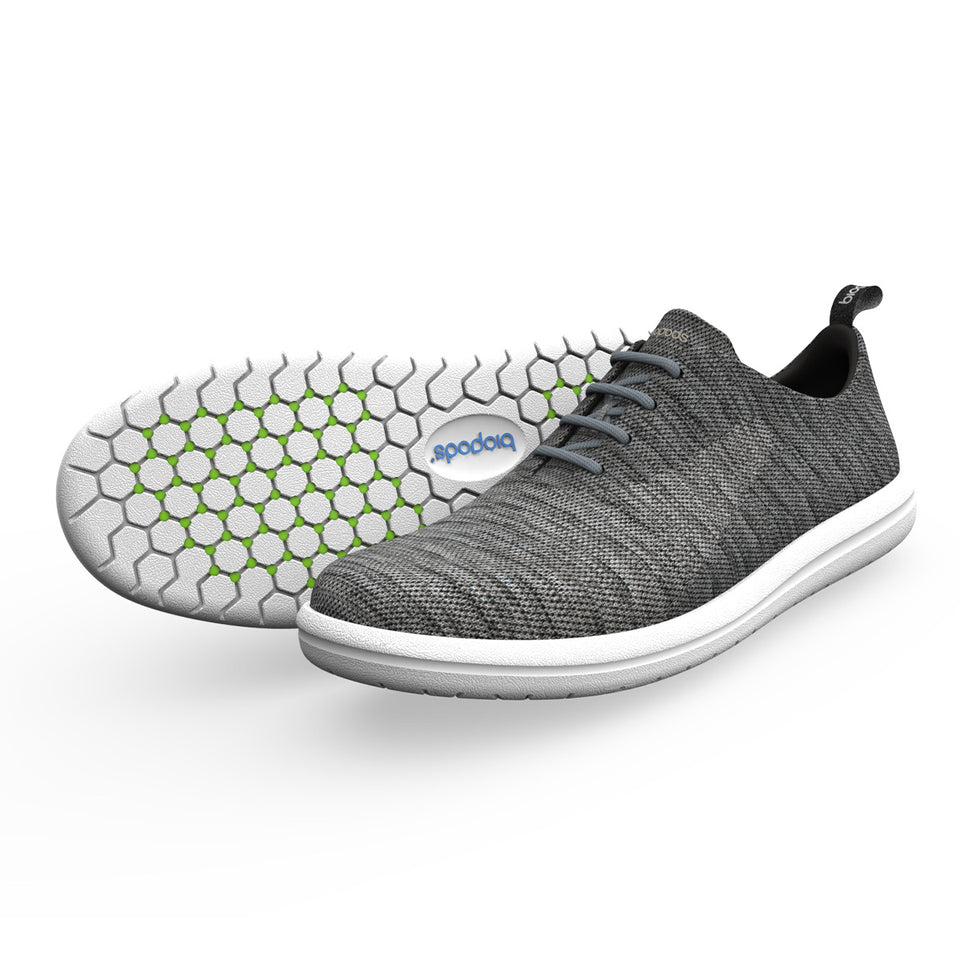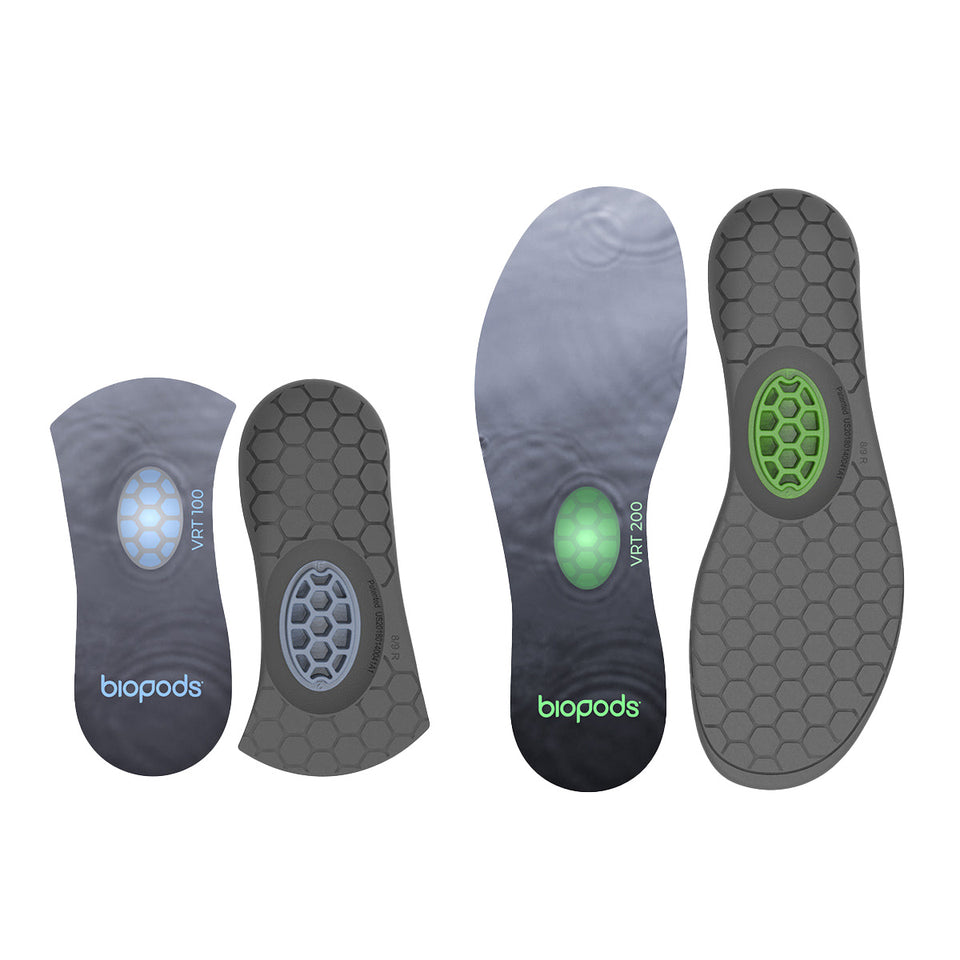The Diabetic Foot
The early symptoms of a Diabetic Foot include pain, discoloration, loss of sensation, poor balance, and a “pins and needles” feeling. As the disease advances, there is an ever-increasing vulnerability to soft-tissue wounds that develop into nonhealing ulcers and infections.

At their worst, chronic infections like these can lead to gangrene and amputations. Concurrent to the soft tissue vulnerability is a very high rate of notably severe foot deformities such as hallux valgus, bunions, corns and calluses, and hammer toes. The central issue is the progressive loss of the oxygenation that is necessary for tissues to heal. Over time, the diabetic foot follows the sequence of venous stasis, poor circulation, capillary breakdown, and, ultimately, soft tissue necrosis.
Dr. Sam Dubé discusses the diabetic foot
Learn about the symptoms, causes, and benefits of different treatment options.
Uncorrected, poor foot mechanics contribute to a worsening of diabetic foot symptoms.
Early-phase, poor foot function is primarily caused by the long-term use of footwear, especially footwear that restricts or interferes with the foot’s natural, optimal dynamic movement.
As poor foot mechanics become more dysfunctional over time, the foot’s soft tissue and bone structures become increasingly incapable of managing the forces imposed on them by day-to-day activities. Over time, poor function becomes the maladapted norm.
Lower leg muscle function, which is essential for venous blood return, is poor to absent in maladapted feet. Healthy lower leg muscles normally act as muscular ‘pumps’ for venous blood return.
Maladapted foot function also exhibits an inefficient and unstable arch system. Instability increases excessive foot movement in a shoe, which imposes inappropriate pressure at localized points along with rubbing and friction to generate “hot spots” that are the precursor to the formation of ulcers.
When poor foot function is present, especially concurrent with the metabolic vulnerabilities of diabetes, the serious consequences of deformity and soft tissue necrosis are almost inevitable.
Modern science has identified that the nervous system plays a critical role in stabilizing the feet and ankles when walking or running. It is now understood that poor foot mechanics are a symptom of inefficient neuromuscular function caused by conventional footwear use. In fact, conventional footwear use causes poor neuromuscular function throughout the feet, legs, hips, and back, when:
-
the soles of the feet don’t receive the subtle, varied stimulus that the nervous system requires for healthy function, and
-
snug toe boxes, stiff midsoles/outsoles/uppers and tight lacing restrict healthy foot movement.
To learn more about how your footwear affects function and performance, click HERE.
The best way to prevent and address the poor foot mechanics that exacerbate diabetic foot problems is to retrain optimal neuromuscular function and to use footwear that is soft, flexible, and roomier in the forefoot.
Conventional treatment methods for the diabetic foot
Since the late 1890s, the standard treatment for poor foot mechanics has been to artificially support the arches with an orthotic. Other conventional diabetic foot treatment options include:
-
Taping
-
Cushioning products
-
Meticulous cleaning, drying, nail trimming
-
The use of rigid ‘protective’ footwear
-
Avoidance of barefoot walking
-
Surgery
Modern science has transitioned away from using long-term support and cushioning on any body part because it causes a progressive weakening of the body part being supported or cushioned.
The modern approach to treating the diabetic foot
Science underscores the body's inherent ability to restore and improve its own function when presented with the appropriate challenges. This principle lies at the heart of contemporary therapeutic methods used to correct and enhance neuromuscular function, particularly in foot health.
Therapeutic rehabilitation, focusing on the body's natural mechanics and responses, emerges as the safest and most effective strategy for addressing the underlying causes of conditions like the diabetic foot, shifting the focus from temporary relief to long-term health and functionality.
Understanding the Fundamentals:
-
Proper Technique: This refers to rehabilitative exercises that concentrate on re-establishing optimal neuromuscular function. It's about reinforcing healthy mobility, muscle strength, stability, and alignment in a safe manner.
-
Right Stimulus and Right Movement: Effective movement is predicated on the quality of sensory information the brain receives, particularly from the soles of the feet. The feet's nerve endings are crucial in transmitting this data, ensuring coordinated movement throughout the musculoskeletal system. When sensory input is compromised—as is often the case with conventional footwear—the body's natural reflexes and movements can be inhibited.
Adopting the Modern Approach:
-
Barefoot Walking: Engage in barefoot walking, particularly on natural surfaces, as frequently as feasible. This practice delivers the optimal stimulus for healthy neuromuscular function, promoting the right kind of movement.
-
Utilization of Biopods®: Incorporate Biopods footwear or insoles into your routine. Our footwear is designed to create an ideal environment for proper foot technique, while our insoles are crafted to enhance the sensory feedback in your conventional shoes. For optimal results, use in footwear that is soft, flexible, and allows for natural movement of the arches and toes.
-
Consultation with Healthcare Professionals: Prior injuries might have led to the formation of fibrotic scar tissue. It's advisable to consult with a healthcare practitioner about therapies that can address these issues to facilitate better foot function.
Conclusion:
The modern approach to foot health is integrative and proactive, focusing on encouraging the body's natural ability to heal and maintain itself. It's an investment in your long-term health and wellbeing, steering away from temporary fixes and instead, fostering lasting, comprehensive foot health.
Consult with your healthcare practitioner to ask about employing soft tissue mobilization therapies to address the fibrotic scar tissue that may have formed prior to using Biopods.
For more information on what to expect when using Biopods, click HERE.
* Engineered to provide the perfect blend of stimulus and freedom, our shoes are designed to promote the optimal health of your feet.
Dive into a world where footwear isn’t just an accessory but a means of enhancing your natural foot mechanics and overall well-being.
**Designed to deliver the precise stimulus needed for healthy foot function, these insoles are your first step towards transforming conventional footwear into a platform for improved foot health.
Note: For maximum effectiveness, pair with soft, flexible footwear that's loosely laced. Certain restrictive or heavily cushioned shoes may diminish the insoles' benefits. Consult our Footwear Guide to ensure your shoes are compatible with the Biopods philosophy of promoting foot health.
* Biopods Footwear provides the ideal stimulus to the soles of the feet and freedom of movement required for optimal foot health.
** Biopods Insoles provide the stimulus to the sole's of the feet arch area required for healthy foot function. Use the insoles in soft, flexible, loosely laced footwear for best results.
When used in stiff, restirictive, and cushioned footwear, the insoles' effectiveness diminishes relative to the stiffness, restricitiveness, and cushioining. Some footwear design characteristics are incompatible with healthy foot function and Biopods Insoles. Please see our Footwear Guide for additional information.
Experience exceptional pain relief, comfort, and performance. RISK FREE!
120 day
Money Back Guarantee
1-8 weeks
Results Guaranteed
99.5%
Customer Satisfaction
Sezzle
Pay In Installments







